Exploring The Wonders of Big Bend National Park
Big Bend National Park is a stunning and vast national park located in the state of Texas, USA. It is renowned for its diverse landscapes, including vast deserts, deep canyons, rugged mountains, and the iconic meandering Rio Grande River, which forms the border between the United States and Mexico. The park covers an area of over 800,000 acres (3,200 square kilometers) and is one of the largest and most remote national parks in the contiguous United States.
10 Mins
173 Views
July 26, 2023
Discover Big Bend National Park Beckons with its Vast Canyons, Desert Landscapes, and Mesmerizing Rio Grande River
Big Bend National Park is a stunning and vast national park in Texas. It is renowned for its diverse landscapes, including enormous deserts, deep canyons, rugged mountains, and the iconic meandering Rio Grande River, which forms the border between the United States and Mexico. The park covers an area of over 800,000 acres (3,200 square kilometers) and is one of the largest and most remote national parks in the contiguous United States. Big Bend National Park, nestled in the remote southwest of Texas, is a natural wonderland offering diverse experiences for outdoor enthusiasts and nature lovers. With its sprawling landscapes, stunning geological formations, and rich biodiversity.
Best Sights in Big Bend National Park
1- The Chisos Mountains Basin
First and foremost, the winding road leading into the Chisos. It is three miles west of Panther Junction of Big Bend National Park. Moreover, the environment quickly transitions from desert to forest as you ascend Green Gulch, which is more than two thousand feet. The spectacular Window is located west, a V-shaped opening in the practically continuous ridge that circles the basin. At the same time, the block-like Casa Grande rules the eastern horizon. Seven miles away is the basin, an alpine valley. You must visit the basin since it is home to the sole hotel and restaurant in the park, as well as a gift shop, convenience store, ranger station, campsite, theatre, and stables. It would be best to visit the basin for the view because it is here, and you will also find many other amenities.
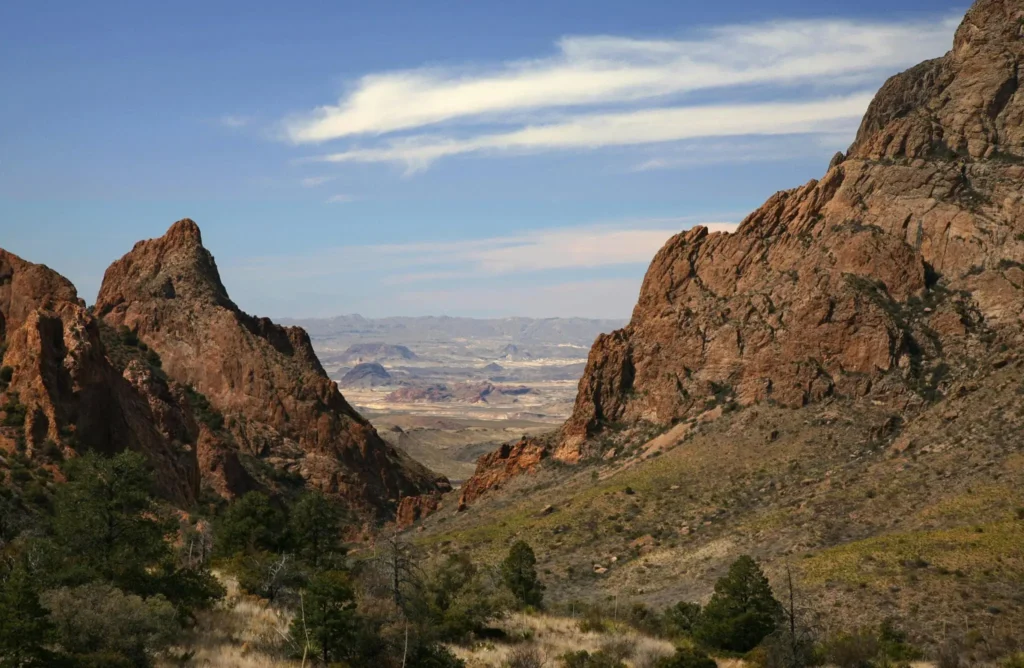
2- Hot Springs
The hot springs are about a two-mile drive along an improved dirt road from the turnoff near Rio Grande Village Big Bend National Park. They were constructed in two stages between 1909 and 1927 by a somewhat idealistic tourist operator named J.O. Langford. Pick up a self-guiding trail brochure in the Hot Springs parking area for 25 cents, then begin strolling. To get to the springs, walk a quarter mile past some deserted stone buildings that formerly served as a post office and a motel, a tiny grove of palm trees (an excellent place for a picnic), and some Indian pictographs carved into a small cliff above the river.
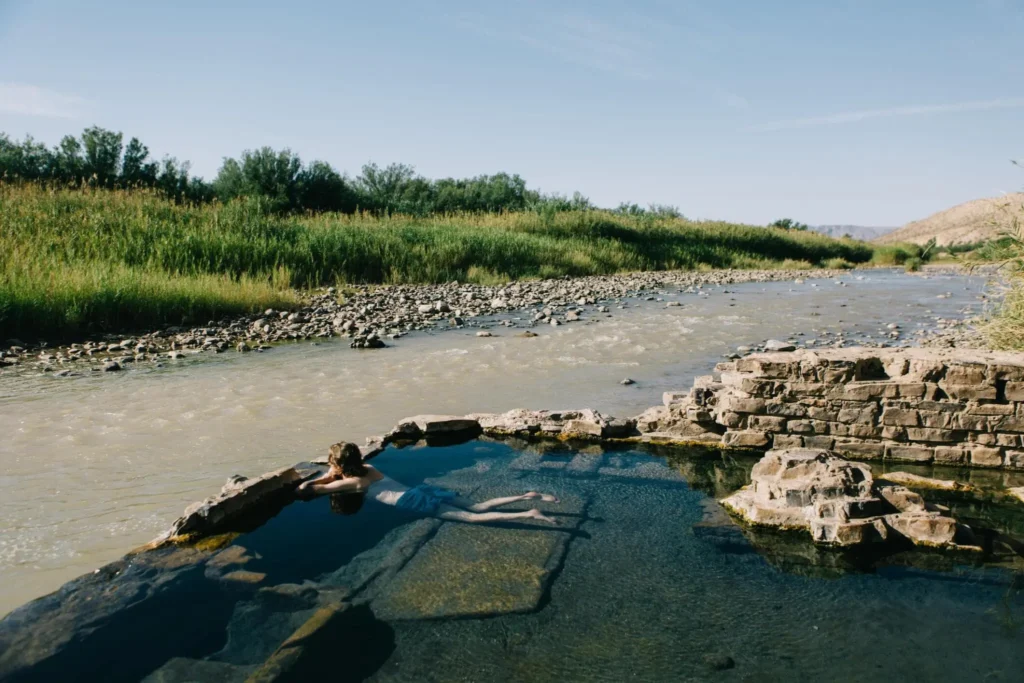
3- Santa Elena Canyon
With its steep 1,500-foot limestone walls, the parking lot at the Rio Grande and Terlingua Creek confluence offers a close-up view into this stunning yawning chasm. One of the most excellent trails in the park begins at the parking lot and is about 1.7 miles roundtrip. To reach a vast ledge perched above the river, it first crosses the largely dry Terlingua Creek and then ascends upgraded stair-step switchbacks (with handrails). Before ending, the trail descends to river level via a reed-covered sandy vega strewn with enormous rocks. You should go on this walk if you do one in the park. Count on two hours.

4- Boquillas Canyon
The first section of the trip from the parking lot is uneventful and involves climbing over a barren, rocky hill, descending to the river, and then crossing a cut-bank path. However, the trail rewards hikers with breathtaking vistas once they enter the canyon. Nothing in the park compares to the Boquillas palisades for the play of light on rocks, especially in the afternoon. Bonus feature: the enormous, wind-whipped dune inside the canyon is ideal for sand surfing. Count on two hours.

5- Grapevine Hills
You can reach a dry canyon on the desert floor after a six-mile journey down an improved dirt road suited for regular cars. The route concludes with a short, steep scramble to a scene that seems to have been made by a baby Godzilla: a large boulder dangerously perched atop two smaller slabs, one of the park’s best photo chances, after a mile-long walk through a valley of rock-strewn debris. Give yourself an hour and a half.

6- Dagger Flat
This self-guided car excursion on a well-graded dirt road is one of Big Bend’s lesser-known attractions. The most thorough introduction to the desert plant community, as seen through a windscreen, is provided by this book. Get a guidebook for 50 cents at the park’s northeastern entrance at the road’s beginning. The seven-mile route ends at a loop in the center of an odd thicket of huge dagger yuccas; some grow to heights of more than 10 feet and should be in full bloom by late March. The loop region is called Dagger Flat, but topographical maps show that the flat is at least a quarter mile away. Give yourself an hour or two if you want to walk.
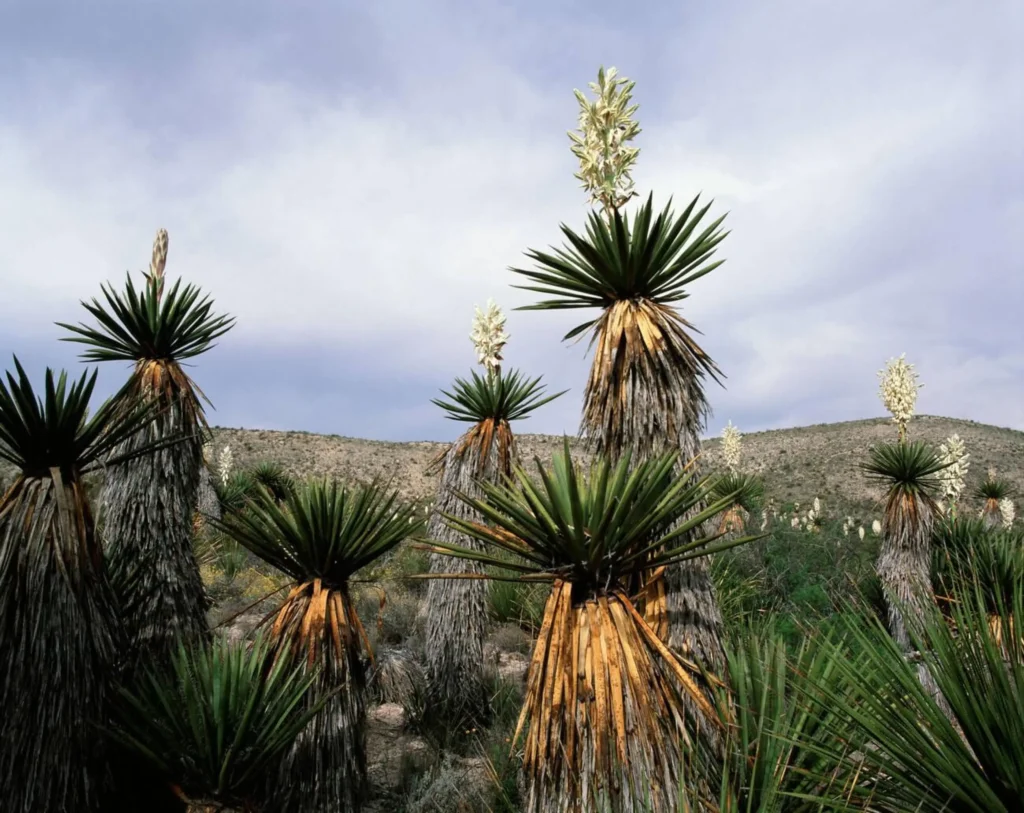
7- Dugout Wells
Another overlooked location that briefly introduces the desert on foot is just off the main paved road to Rio Grande Village. The presence of hardwood trees, a windmill, and a spring frequented by various animals at sunrise and sunset imply an oasis. The harsh reality surrounding the spring is highlighted by the nearby Chihuahuan Desert Nature Trail, a half-mile walk with interpretive markers identifying and describing representative desert plant species. Set aside 45 minutes.
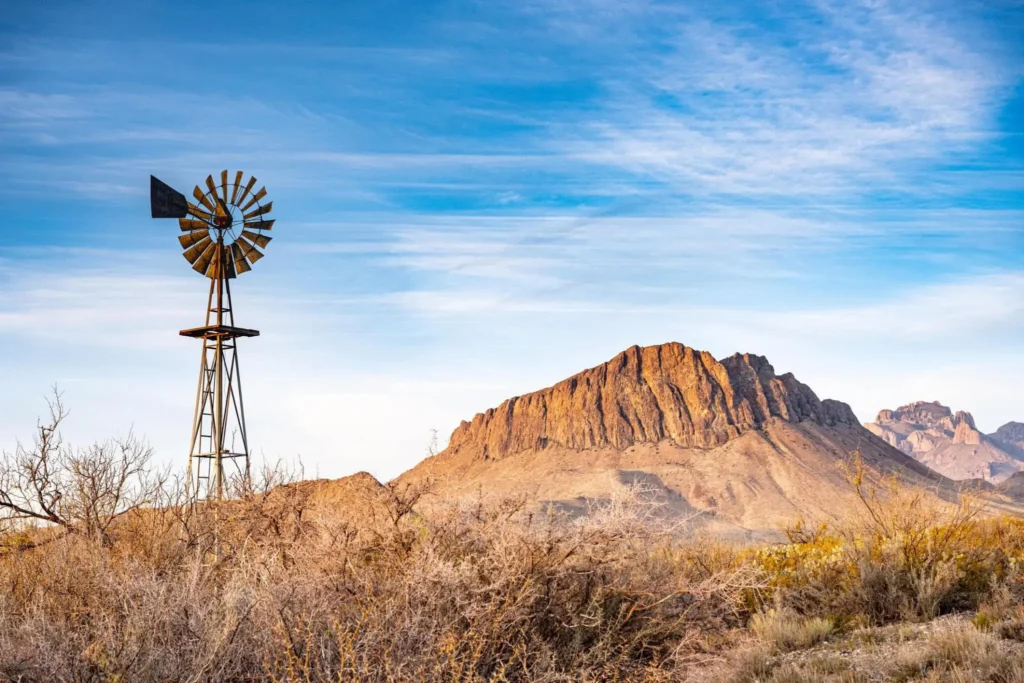
8- The Window
The Window, a 20-foot gap between two solid rocks polished slick by water erosion, is where the rain and snowmelt from the Chisos Basin empties. You can view the desert below through a slender rock structure aptly called the Gunsight, even though it is slippery for anyone to dare peer over the edge. However, you don’t need to be close to the Window to appreciate it as a backdrop for the basin’s sunsets. The bench at the end of Window View Trail, three-tenths of a mile from the convenience store, offers one of the better vantage points. The Window Trail leads to the pour-off over a tree-shaded valley and a flowing creek over two to a half miles of hiking (depending on where you start). Remember that the walk will take two to three hours, and the return trip will be uphill.

9- The Lost Mine Trail
Despite having a more excellent grade than the Window Trail, this is the most accessible hike in the high Chisos. The trail ascends a series of shady switchbacks to reach multiple stunning vistas of the basin below and Casa Grande above. The substantially expanded parking area, where guidebooks are offered for 25 cents, is proof of its popularity. You can see deer, kangaroo rats, mountain bluebirds, enormous ravens, and even peregrine falcons flying in the sky from the route.
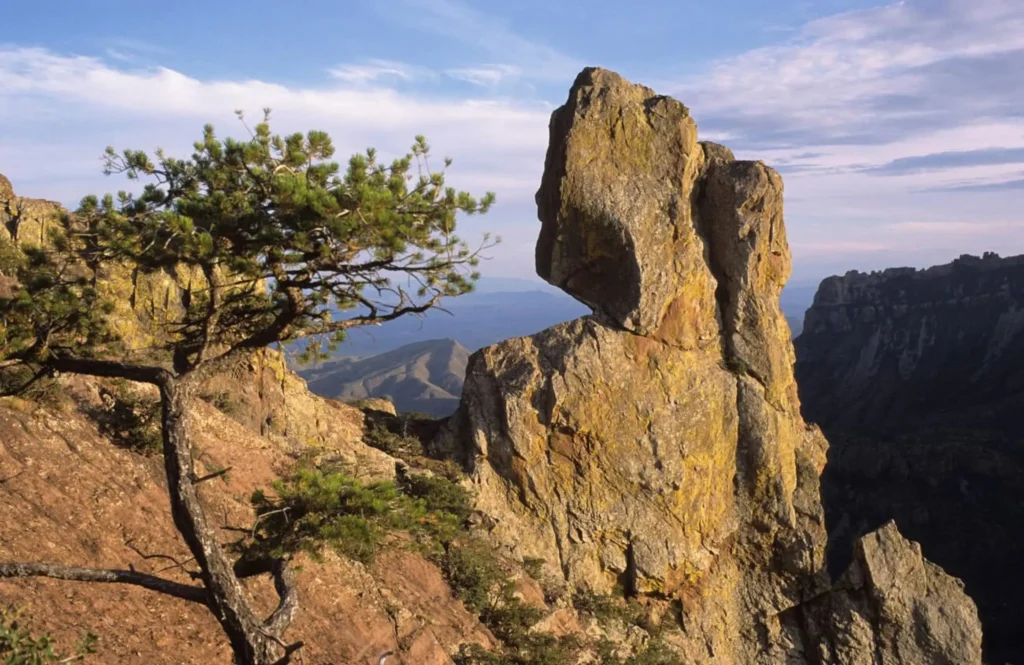
10- The South Rim
Unfortunately, it is also one of the most challenging places to get to since, depending on your path, getting to the top of the Chisos requires an exhausting all-day horseback ride or a strenuous twelve- to fifteen-mile climb. The reward is a sequence of breathtaking views that, on a clear day, stretch more than 200 miles across the North American continent from the precipice. From here, the river’s 107-mile, three-canyon curve through the park is quickly followed by the eye. The treacherously steep Pinnacles Trail is best traversed on the way down, while the more moderate Laguna Meadow Trail is one and a half miles longer. Consider stopping in Boot Springs for a break beside a tranquil brook. Colima warblers, hardly seen in the United States, use this peaceful refuge as a feeding ground.
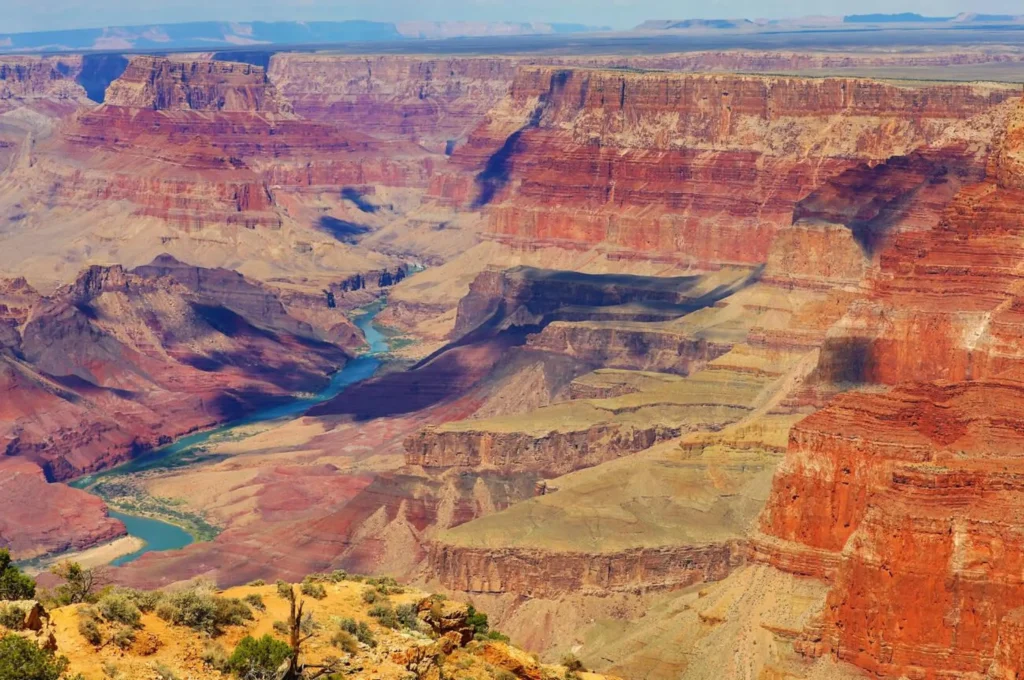
Where to Stay Indoors in Big Bend National Park
Choosing to stay inside or outside the park is a significant consideration for practically every vacation to Big Bend. The Chisos Mountains Lodge near the basin (432-477-2292) is the only option inside the park. Its central location makes it more accessible to most park activities. Staying outside will provide access to a phone, various eateries, and vital family-friendly amenities, like in-room T.V. and an on-site swimming pool. The lodge features 66 rooms that fall halfway between a Motel 6 and a Holiday Inn but are in a much nicer setting ($107-$143 for a double). Near the motel apartments, at a distance of about 300 yards. It is a collection of six basic cottages ($136 for two). Booking cottages a year in advance is required due to the high demand.
-
To the west of the park, There are motels.
In Marathon (69 miles to the north), Study Butte (24 miles from Panther Junction), Lajitas (41 miles), and elsewhere. The Big Bend Motor Inn and the companion Mission Lodge across the highway (432-371-2218; 877-386-4383) are two simple but clean motels with Wi-Fi, basic cable T.V., and a gift shop. There is a pool, a combination petrol station, a convenience store, and a cafe in Study Butte (pronounced ‘Stewdy Byoot’, two miles from the western park entrance).
A nine-hole golf course with carts is also present in the vicinity. A typical double costs between $89 and 105 a night. Easter Egg Valley (432-371-2254). Also known as the Chisos Mining Company Motel, it is less than a mile to the west and offers tastefully furnished rooms. In a collection of interconnected prefab structures. A double costs $76 per night. About 30 miles north and east of the Study Butte crossroads, the Terlingua Ranch Motel (432-371-2416) features a restaurant, a pool, and contemporary accommodations starting at $66 for a double.
-
The Ultimate Hideout Lajitas
in the formerly famous resort town of Lajitas, offers the most accommodation options west of the park, with 92 rooms, a bunkhouse, cabins, and condos, the majority of which are furnished with antiques and have a telephone, cable T.V. and access to a pool (central reservations 432-424-5000). A two-bedroom condo that sleeps six people costs up to $702 per night, while double rooms cost $159. Lajitas has earned the nicknames “the Palm Springs of Texas” and “Walley World”—the latter in honor of Houston entrepreneur Walter Mischer,
Moreover, he came up with this fictitious Dodge City twenty years ago. The Barton Warnock Environmental Education Center’s desert museum and gardens, a bar and restaurant, a nine-hole golf course, an airstrip, stables, tennis courts, and mountain bike rentals round out the accommodations. The Badlands Hotel, which serves as the front desk for all accommodations in Lajitas, is located at the covered faux-Western town boardwalk, which also houses a drugstore and soda fountain, a liquor store, the headquarters of Big Bend River Tours, an art gallery, and a gift shop.
Where to Stay Outdoors in Big Bend National Park
There are three campgrounds in Big Bend: Chisos Basin. Which has 60 sites; Cottonwood is 35 miles from Panther Junction in the western portion of the park. Close to the historic Castolon store, with 31 sites, and Rio Grande Village. 20 miles from Panther Junction, on the east side of the park, with 100 sites and an overflow campground, as well as a small caravan park with hookups ($27 per night), a store (one of the two places in the park), and a
What to do in the 24 Hours Before The journey
Up to 24 hours before the journey to Big Bend National Park. Visitors can get permits at the visitor centers for the fifty designated rudimentary backcountry campsites in the Chisos Mountains. Other places have zones that hikers are assigned to when they get backcountry permits, which divide up the rudimentary campsites. Only four-wheel drive vehicles can access the rudimentary campsites between Mariscal Canyon and Talley. Down by the Rio Grande in the park’s southernmost extremity, during busy times, and the sites near Dagger Flat and Persimmons Gap in the park’s northernmost section. Backcountry campers must have a permit and be at least a half mile from any road. A quarter mile from any spring or historic site and a hundred yards from any trail.
Affordable Camping Adventures Await at Big Bend National Park
Individual campsites in the park cost $14 per night and are available on a first-come, first-served basis. A $10 permit is necessary for backcountry and rudimentary sites, and it can be purchased in person at one of the park’s visitor centers. The 101-space R.V. campsite in Lajitas (432-424-3471), which has full hookups, Wi-Fi, cable T.V., and tent sites, and Bend Motor Inn’s RV Park (432-371-2218), which also rents essential eight by ten-foot wooden huts euphemistically referred to as cabins.
The only campground north of the park is the Stillwell Store (432-376-2244), located six miles east of U.S. 385 on FM 2627. It features R.V. hookups and 25,000 acres for rustic camping right next to the Hallie Stillwell Museum Hall of Fame, a worthwhile stop even if you’re not camping. Private campsites typically cost $5 per person, while R.V. hookups cost $18.50 per night and $110 per week.
Conclusion
Big Bend National Park, situated in southwestern Texas along the Rio Grande, captivates with its vast and diverse landscapes. The park offers a unique blend of natural beauty and ecological richness, from rugged mountains and sweeping canyons to the meandering river. Its remote location provides a haven for wildlife and stargazers alike, making it a sanctuary for those seeking solitude and a connection with nature. Whether exploring the Chisos Mountains, floating along the Rio Grande, or marveling at the expansive desert vistas, Big Bend National Park is a testament to the untamed beauty of the American Southwest.
118 miles of its border with Mexico are shared by Big Bend, which is wholly within Texas. Through the park's Boquillas Crossing Port of Entry, which is jointly run by the National Park Service and U.S. Customs and Border Protection, visitors can enter Mexico.
Big Bend is sometimes referred to as Texas' Gift to the Nation and is renowned for its natural riches, recreational activities, and cultural history. Native Americans have inhabited this region for thousands of years and/or traveled through it. Archaeological sites and pictographs provide proof of their existence.
On our ranking of the biggest US national parks, Big Bend comes in at number 14. Big Bend National Park is named after the Big Bend, a significant bend in the Rio Grande River, and has a total size of about 801,163.21 acres (1,262.5 square miles).
Entrance fees apply to all vehicles entering Big Bend National Park. Cashless; only credit/debit cards accepted. Inclement weather does not result in refunds. When you get to the park, you can pay your admission fee.
The park offers hiking, biking, fishing, astronomy, bird viewing, river rafting, and horseback riding among outdoor pursuits. Is it worthwhile to spend your time traveling 300 miles east of El Paso, Texas, the closest large city, to reach this park? Again, we affirm.
- The Park Is Home To An Incredibly Diverse Array Of Plant & Animal Life.
- Big Bend Is The Largest Park In The State Of Texas-It's Larger Than The State Of Rhode Island.
- It's The Only National Park With A Mountain Range Entirely Contained Within Its Own Boundaries.
The area was given the moniker Big Bend due to the river's abrupt turn from a southeasterly to a northeasterly flow. The Rio Grande sculpts not only stunning canyons but also a political boundary as it runs through the Chihuahuan Desert.
One of the greatest ways to explore Big Bend National Park is via the South Rim Trail. You will gradually ascend from the Chisos Basin to the South Rim, where you can take in breathtaking vistas of the Chihuahuan Desert. For an even more epic experience, including the quick but challenging ascent up Emory Peak.
Big Bend offers a variety of options for overnight camping and lodging, as well as two petrol stations and three camper stores, despite its extreme isolation.
Take part in one of Big Bend's ranger-led programs if you're visiting and nervous about trekking by yourself. I develop experience and confidence in my solo hiking abilities with each hike.
The period from late autumn to early spring, when the weather is often more tolerable, is when people most frequently travel to Big Bend. In fact, winter is frequently the ideal time to visit the park because of the 61-degree high and 38-degree low average temperatures in January.
Most people who travel to Big Bend use their own cars. While available, public transport isn't always the most practical option.
Big Bend National Park: A Texas-Sized Geologic Wonder Of The World.
The Mexican Revolution began in 1910, and the Big Bend was in peril for more than ten years. Both sides of the Rio Grande saw raids, pitched battles, and massacres. The United States and Mexico nearly went to war as a result of tense ties between the two nations.
The largest towns in the region are Alpine, Presidio, Marfa, Sanderson, Terlingua, and Marathon
